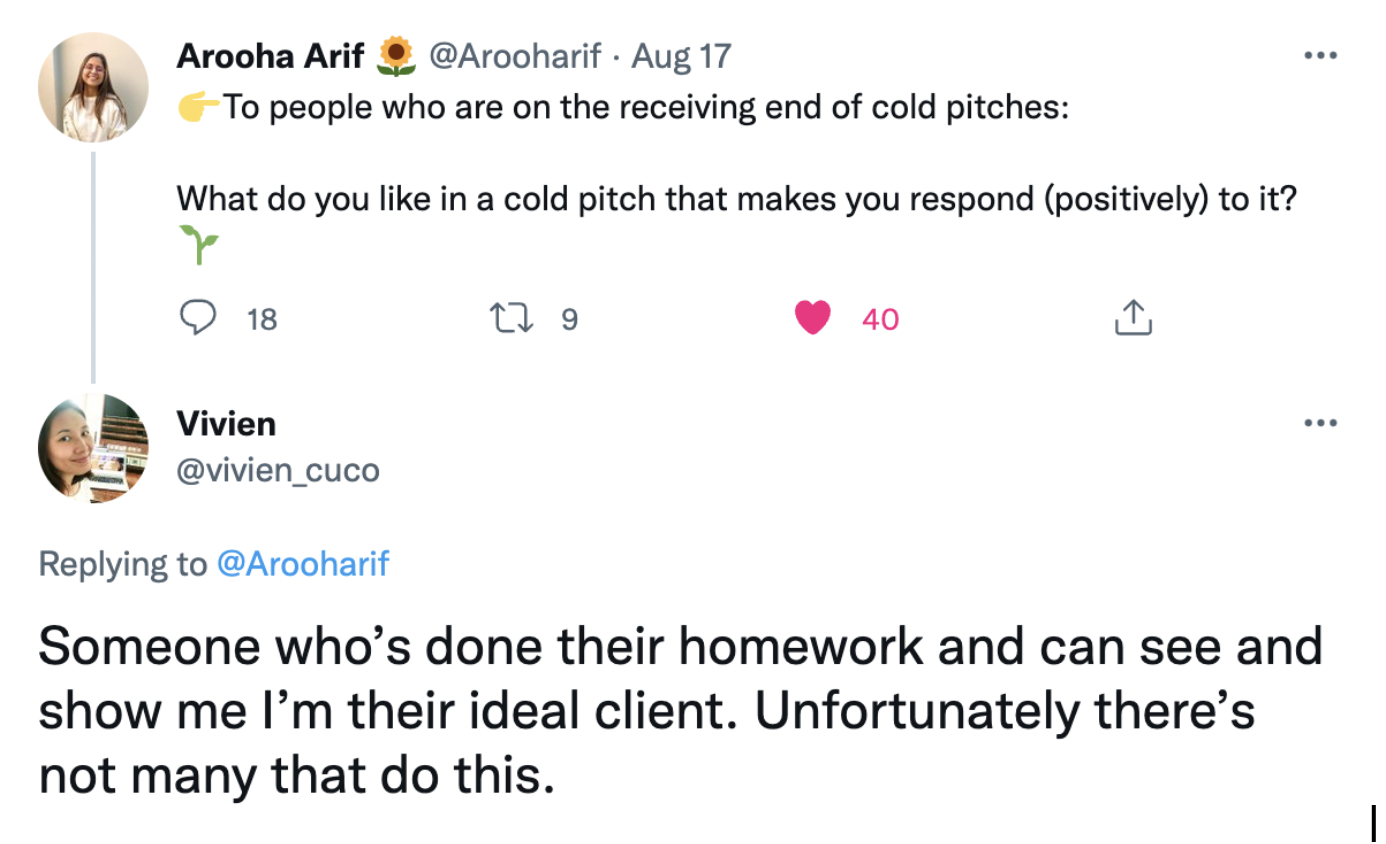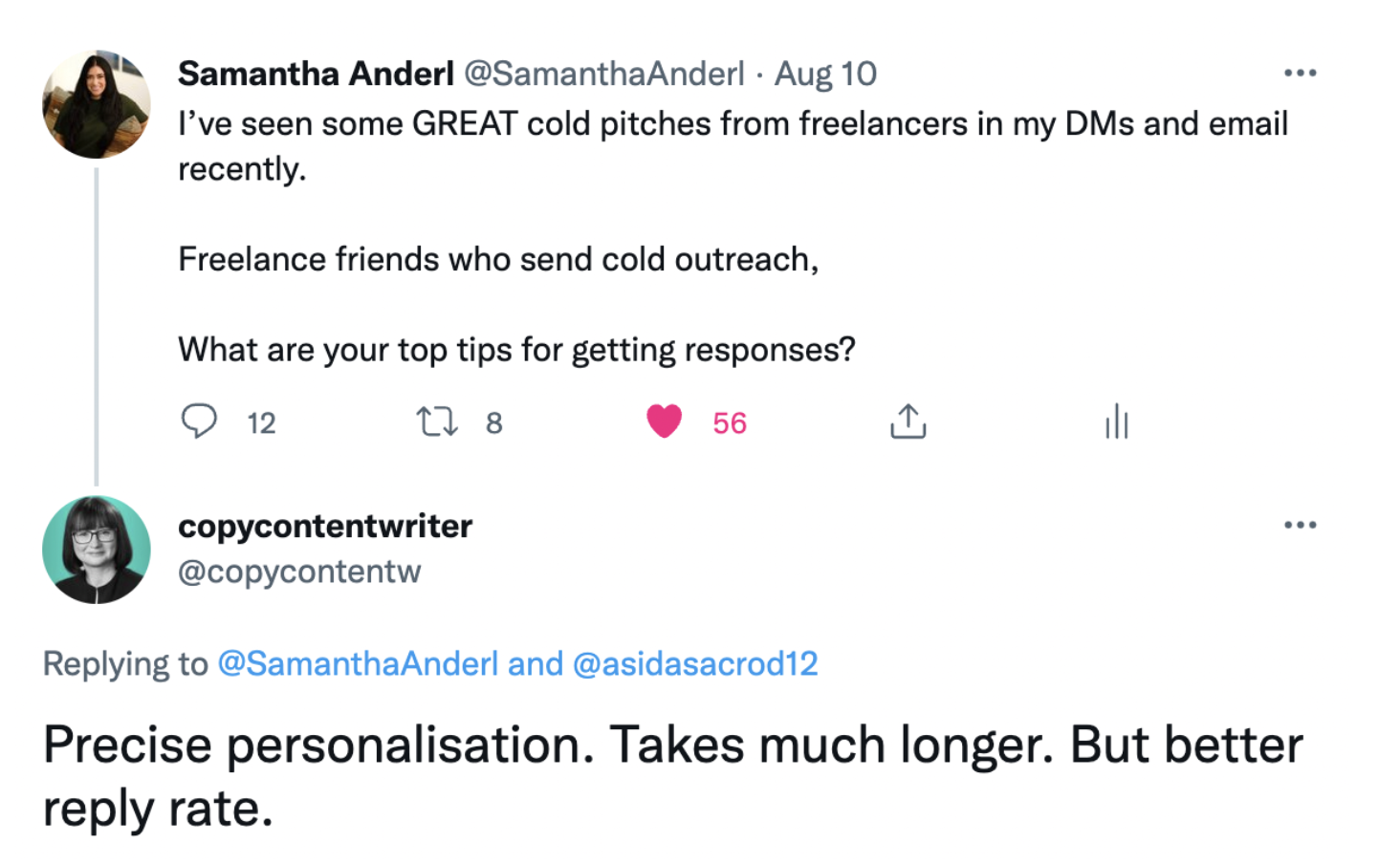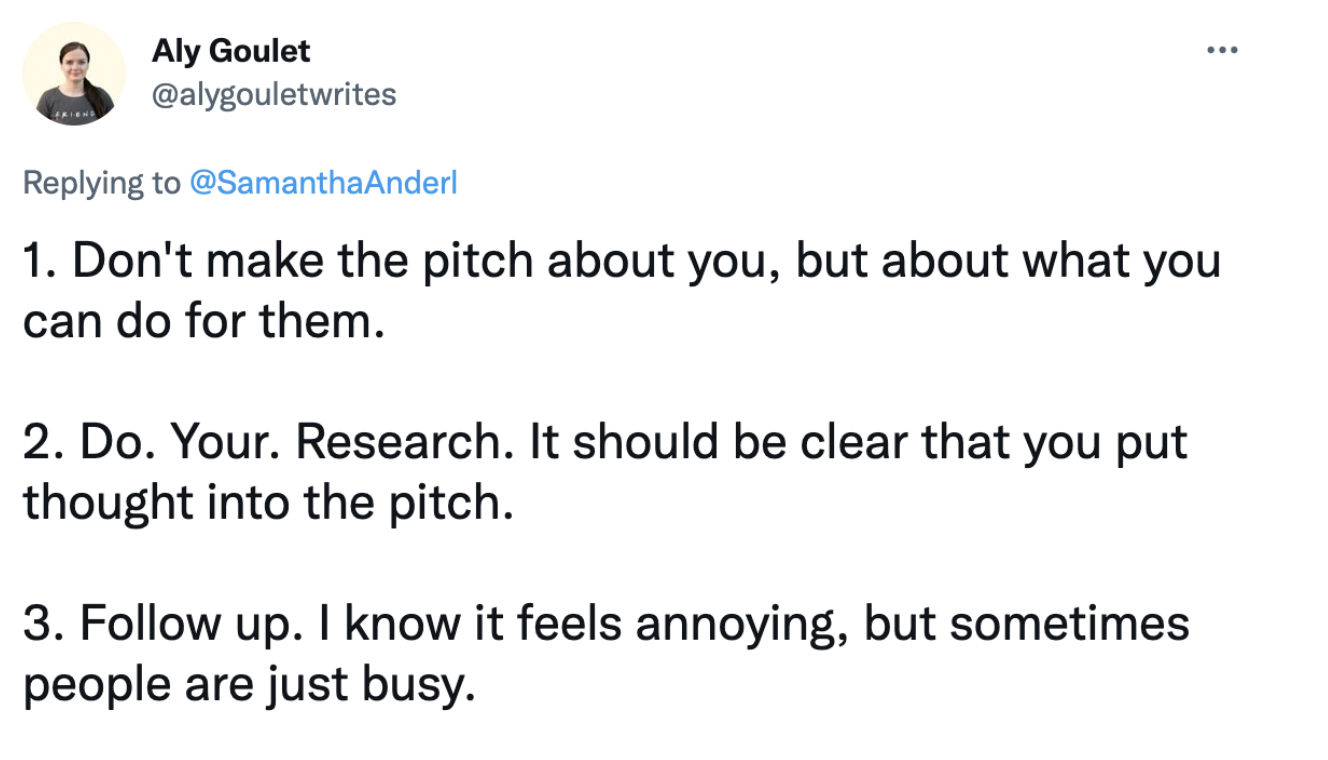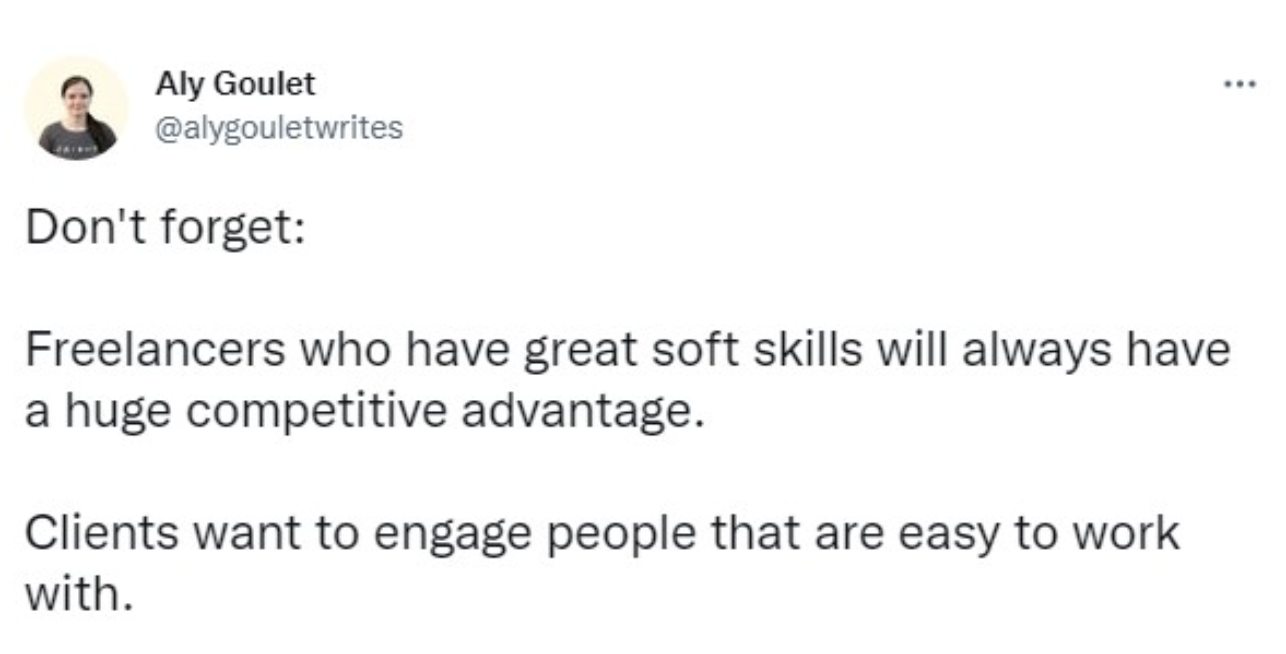
The Art of Cold Pitching to Grow Your Freelance Business
Cold pitching—just hearing the phrase can make you feel queasy. Putting yourself out there. Crafting a message that resonates. Waiting for a response. It can all feel like too much to even try. But here’s the thing: it can actually be a useful tool for building your business.
When done correctly, cold pitching is a great way to connect with companies you love and want to work with rather than waiting for opportunities to come to you.
If you’re ready to give cold pitching a try but are still feeling unsure, use these strategies to confidently, and more effectively, connect with potential clients.
When done correctly, cold pitching is a great way to connect with companies you love!
Do Your Homework
The first step to a great pitch is knowing who you’re pitching. In other words, do your homework. Knowing their name and what they do isn’t enough if you want to cut through the clutter of an overflowing inbox or DM.
And we agree. Not only is doing your homework key for personalizing the pitch (see the next section), but it helps you stand out because so few freelancers take the time to truly understand who they’re reaching out to. Some details you want to look for before personalizing and sending your next pitch:
- Recent launches, campaigns or content
- Their mission and values
- Who they work with and speak to
- Where they’re based
- Where online they’ve been mentioned
- Any personal tidbits they share openly (books they love, trips they’ve taken, etc.)
Personalize the Pitch and Connect
Personalization is powerful. And while it requires more time and effort, it can and will pay off.
The key is to personalize the email based on the homework you did and use that information to connect to the person you’re reaching out to. This personal connection can be the difference between “a random email” and “a thoughtful message from someone who just gets me!”
Here are a few examples of how you might position this:
- “I love how your app helps people find mental health professionals. It’s been so challenging for me to find someone who feels like the right fit, so I know how hard that is.”
- “I see you’re based in Chicago! I was born and raised here as well and have spent so much time in that park right next to your office!”
- “I always love working with female founders but when I saw you graduated from the University of Vermont, I was even more excited! I’m an alum as well—Go Cats!”
Share The Overall Value You Bring to the Table
You’re amped up about what the company does and how you can work with them. You want to share all the ways in which you know you can help—but don’t overdo it in that first email. Instead, pull back and think high-level about the value you can add.
In your initial cold pitch, the goal is to make an impact quickly and simply. The best way to do this is to concisely articulate the value of your work. In a blog post my co-founder, Andrea, wrote, she explains what I mean:
“You don’t simply complete tasks, you help push businesses forward. For example, you’re not selling 3 blog posts for $1,000. You’re selling an outcome: content that’s going to increase traffic to your client’s site and ultimately lead to more revenue.”
Use your short elevator pitch as your hook in your initial message. If you’re not sure what your elevator pitch is, Andrea suggests looking back on the results and value you’ve created for your last five clients and using that to build your one.
An example of this might be, “I help you generate more leads from Facebook and build a more powerful brand presence with social media management and strategy. I’ve helped dozens of early-stage startups increase their customer number and brand awareness through social media.”
Be Specific, Short, and Clear on Your Ask
I know what you’re thinking: that feels like a lot to fit into a single email or message while being concise! When you boil it all down, though, you don’t actually need to include much in your initial message. The key pieces include:
- 1 to 2 sentences for personalization and connection
- 1 to 2 sentences for your outcome-based pitch
- 1 sentence with a clear and simple ask
- 2 specific time options for a call
Use this template for your next round of cold pitching so you keep it crisp but don’t miss any important details.
Hey [name],
My name is [name], and [personalized reference and connection].
I’m reaching out because I am [insert outcome-based elevate pitch]. I’d love to work with your company.
Do you have time to talk about how I could support you in [insert how you help] [insert two specific days/times in next 48 hours].
I look forward to your response!
Thank you,
[name]
Here’s an example of how you can use this template.
Hey Brian,
My name is Jessica and I love what you do at Finance Literacy Co. As someone who’s been personally affected by student loans and debt, I truly understand the value of learning about how to manage your finances!
I’m reaching out because I help financial services companies increase organic traffic, and as a result, drive revenue, through SEO content strategy. I’d love to work with your company so you can reach more people who need what you offer.
Do you have time to talk about how I could help increase organic traffic and revenue tomorrow at 1pm EST or Thursday at 3pm EST?
I look forward to your response!
Thank you,
Jessica
Master the Follow-Up
There’s no shame in my follow-up game. While being personal and sending a value-based message is important, the follow-up can’t be overlooked, no matter how good that first email is. Just because something is a top priority for you, does not mean it’s top of the list for someone else.
Here’s a short story to prove consistent follow-up works: We ended up working with a freelancer at Harlow who had been reaching out to us for more than six months! Here’s the thing though, she conducted her follow-up brilliantly. This freelancer didn’t just email us weekly asking to work together. She checked back in with us regularly and would reference the latest news, updates, and social posts she’d seen from us.
She also sent along PDFs of her services and case studies for us to look at in the meantime. The timing wasn’t right for the first few months, but because of her persistence and personalized follow-ups, when the timing was right, she was top of our list!
Follow Up Strategies to Stay Top of Mind
If you’re ready to improve your follow-up game (we recommend it!), here are some strategies you can use.
Show your value: Include case studies, writing samples, or other assets that tangibly show the value of what you offer.
Stay up-to-date: Know what they’re up to (this is easy to find on social media) and check in about that. I.E. “I saw you recently launched a podcast and I loved episode three! How has it been going?”
Master the right cadence: We recommend following up weekly for the first few weeks if you don’t get a response. After a month or so, If you still haven’t had a response, spread your messages out a bit more, maybe every 2 to 3 weeks. Still no response? Make a note to check back in every couple of months. Until someone gives you a firm no or asks you to stop emailing, don’t feel guilty or icky for continuing to press send.
Get the right tools: If you’re a Harlow user, you can set reminders for yourself and track your outreach as a task. Simply keep a running list of what you’ve sent and when, so you can top on top of follow-up. The key here is to stay organized so your process feels calm and stress-free.
Master the Art of Cold Pitching
Cold pitching can be a valuable tool for building your freelance business when done right. Use these strategies and examples to craft a better message and increase your response rates. With a little personalization, a simple, yet impactful message, and plenty of follow-ups, you may find this becomes a key channel for connecting with new clients.










Recent Comments